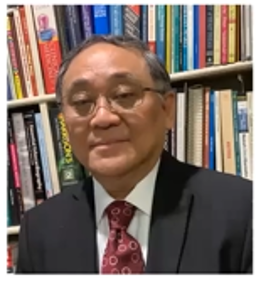Presenters


Course Details
Hypertension is one of the most common causes of atrial fibrillation (AF), which, in turn can lead to severe complications. In this episode of Hypertension Weekly Practice Webisodes of the Philippine Society of Hypertension, Dr. Mighty Ramirez (University of Sto. Tomas) discussed the pathophysiology of AF in patients with hypertension and the role of aggressive blood pressure control and blockade of the renin-angiotensin system in the prevention of atrial fibrillation and its complications. Additionally, Dr. Norbert Lingling Uy (UERMMMC) shared the benefits of angiotensin receptor blockers in the prevention of AF recurrence in patients with AF and hypertension.
About the speakers
Dr. Marcellus Francis “Mighty” Ramirez is an Assistant Professor of the Department of Medicine, UST Faculty of Medicine and Surgery, and heads the Arrhythmia and Electrophysiology Services and Pacemaker Clinic of the UST Hospital.
Dr. Norbert Lingling Uy is the Dean of the College of Medicine of University of the East Ramon Magsaysay Memorial Medical Center. He is a Past President of the Philippine College of Physicians and the Philippine Heart Association.
Estimated time of Completion: 1 hr. 31 mins. 43 secs.
CPD Points: 1 Point
PRC Program No: PROG-2022-41992
PSH Webisode Series: Preventing Atrial Fibrillation in Hypertensive Patients Course Outline
The River of No Return: Preventing Atrial Fibrillation in Hypertension (Dr. Ramirez)
- Hypertension and Atrial Fibrillation
- Atrial Fibrillation by the Numbers
- Continued growth in AF morbidity and mortality raises the demand for strategies to prevent or delay AF onset and progression
- Risk Factors for Atrial Fibrillation
- HPN & AF – A Virtuous Circle
- HPN & AF Axis in the CV Continuum
- Basic Pathophysiology and Mechanisms
- Substrates Promoting the Initiation and/or Maintenance
- Pathophysiology and Mechanisms: HPN TO AF
- RENIN Angiotensin Aldosterone System May Be Involved in AF Pathogenesis
- Relation Between BP and AF Occurrence in ONTARGET and Transcend Trials
- Pre-Hypertension Associated with 80% High Risk of AF in MESA Study
- LVH is Associated with New Onset AF in Hypertensive Patients
- AF is a Progressive Disease
- Upstream Therapy
- HPN & AF Axis in the CV Continuum
- CARDIO-SIS Study: Tight BP Control Associated with Less AF
- Effect of Aggressive BP Control on Risk of AF
- Risk of New-Onset AF in Intensive vs. Standard BP Control
- Predisposing Disease: Hypertension, Coronary Artery Disease, Heart Failure, Obesity, Apnea, Diabetes, Hyperthyroidism
- RAAS Blockers: ACE Inhibitors, Angiotensin Receptor Blockers, Aldosterone Antagonists
- Pathophysiologic Mechanisms Leading to AF
- Which Patient Groups Does RAAS Blockade Prevent AF?
- ACE INH/ARB in the Prevention of AF
- ACE INH/ARB Studies on Secondary Prevention of Recurrent AF
- Obstructive Sleep Apnea and Atrial Fibrillation
- Lifestyle Modification Prevents AF in HPN
- Key Messages: Preventing AF in HPN
Angiotensin receptor blockers in the management of hypertension and prevention of atrial fibrillation recurrence (Dr. Uy)
- Prevalence of hypertension
- Hypertension and AF
- 2020 ESC guidelines: Primary prevention of AF
- Goals of Treatment
- Initiation of Treatment
- High-risk Patients: Advantages of RAAS inhibitors
- ACEI/ARBs in AF prevention among HPN patients
- ARBs and CCBs in preventing AF recurrence in patients with hypertension and AF: A meta-analysis
- LAAT in ACEI/ARB-treated AF patients
- What is the role of telmisartan in the pharmacological treatment of hypertension?
- Unique “delta lock” structure of Telmisartan
- Pharmacological Profile of Telmisartan
- The Trough/Peak Ratio
- Comparative Pharmacokinetic Profile
- Telmisartan’s Long Duration of Effect
- ONTARGET
- Telmisartan is As Effective As Ramipiril in Preventing CV Events at Increased CV Risk
- Telmisartan and AF Recurrences in Patients with Hypertension: A Systematic Review and Meta-analysis
- Risk factor for Stroke: Atrial Fibrillation
- Global Prevalence of AF
- ESC 2020 Atrial Fibrillation Guidelines
- Clinical Pharmacology of NOACs
- Dose Selection Criteria for Oral Anticoagulants
- The RE-LY trial introduced the modern era of stroke prevention in patients with AF
- Both doses of dabigatran showed a favourable safety and efficacy profile vs. Warfarin in the overall RE-LY population
- Long-term investigations on dabigatran from RELY-ABLE confirmed the overall low incidence of outcomes events and did not reveal new safety signals
- RE-LY Asian population analysis
- Systemic stroke/embolization events
- Major bleeding events
- Intracranial haemorrhage
- Gastrointestinal haemorrhage
- Life-long NOAC treatment raised the question on the need for an antidote when life happens
- Expert consensus (Anticoagulation Education Task Force) felt that the reversal of NOACs may be needed under certain circumstances
- Idarucizumab was designed as a specific reversal agent for the anticoagulant activity of dabigatran
- RE-VERSE AD Group A: efficacy of idarucizumab demonstrated in patients with life-threatening bleeding
- RE-VERSE AD Group B: efficacy of idarucizumab demonstrated in patients requiring urgent surgery
- RE-VERSE AD: other secondary endpoints with idarucizumab
- Idarucizumab is becoming widely available
- Idarucizumab is easy to use and has no contraindications
- Summary
PC-PH-103172 / September 2023
